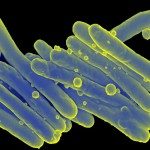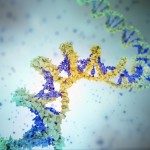Link to Pubmed [PMID] – 26585558
Mol. Microbiol. 2016 Mar;99(5):866-83
In mycobacteria, MmpL proteins represent key components that participate in the biosynthesis of the complex cell envelope. Whole genome analysis of a spontaneous rough morphotype variant of Mycobacterium abscessus subsp. bolletii identified a conserved tyrosine that is crucial for the function of MmpL family proteins. Isogenic smooth (S) and rough (R) variants differed by a single mutation linked to a Y842H substitution in MmpL4a. This mutation caused a deficiency in glycopeptidolipid production/transport in the R variant and a gain in the capacity to produce cords in vitro. In zebrafish, increased virulence of the M. bolletii R variant over the parental S strain was found, involving massive production of serpentine cords, abscess formation and rapid larval death. Importantly, this finding allowed us to demonstrate an essential role of Tyr842 in several different MmpL proteins, including Mycobacterium tuberculosis MmpL3. Structural homology models of MmpL4a and MmpL3 identified two additional critical residues located in the transmembrane regions TM10 and TM4 that are facing each other. We propose that these central residues are part of the proton-motive force that supplies the energy for substrate transport. Hence, we provide important insights into mechanistic/structural aspects of MmpL proteins as lipid transporters and virulence determinants in mycobacteria.


